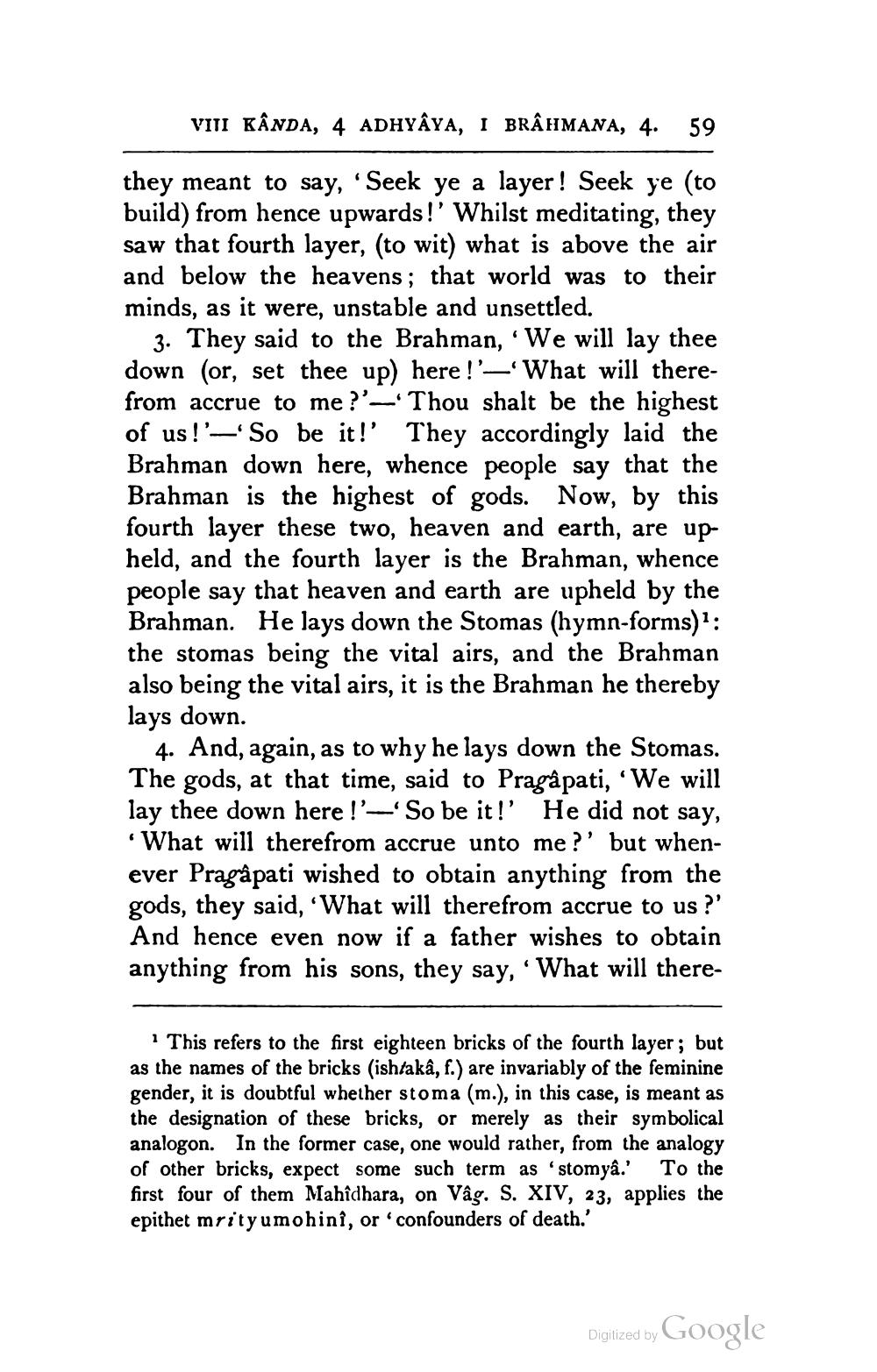________________
VIII KÂNDA, 4 ADHYÂYA, I BRÂHMANA, 4. 59
they meant to say, 'Seek ye a layer! Seek ye (to build) from hence upwards!' Whilst meditating, they saw that fourth layer, (to wit) what is above the air and below the heavens; that world was to their minds, as it were, unstable and unsettled.
3. They said to the Brahman, 'We will lay thee down (or, set thee up) here!'-'What will therefrom accrue to me?'--Thou shalt be the highest of us!'—'So be it!' They accordingly laid the Brahman down here, whence people say that the Brahman is the highest of gods. Now, by this fourth layer these two, heaven and earth, are upheld, and the fourth layer is the Brahman, whence people say that heaven and earth are upheld by the Brahman. He lays down the Stomas (hymn-forms)?: the stomas being the vital airs, and the Brahman also being the vital airs, it is the Brahman he thereby lays down.
4. And, again, as to why he lays down the Stomas. The gods, at that time, said to Pragâ pati, 'We will lay thee down here !'—'So be it!' He did not say, What will therefrom accrue unto me?' but whenever Pragâ pati wished to obtain anything from the gods, they said, 'What will therefrom accrue to us ?' And hence even now if a father wishes to obtain anything from his sons, they say, 'What will there
i This refers to the first eighteen bricks of the fourth layer; but as the names of the bricks (ishtaka, f.) are invariably of the feminine gender, it is doubtful whether stoma (m.), in this case, is meant as the designation of these bricks, or merely as their symbolical analogon. In the former case, one would rather, from the analogy of other bricks, expect some such term as 'stomya.' To the first four of them Mahîdhara, on Vâg. S. XIV, 23, applies the epithet mrityumohini, or confounders of death.'
Digitized by Google




